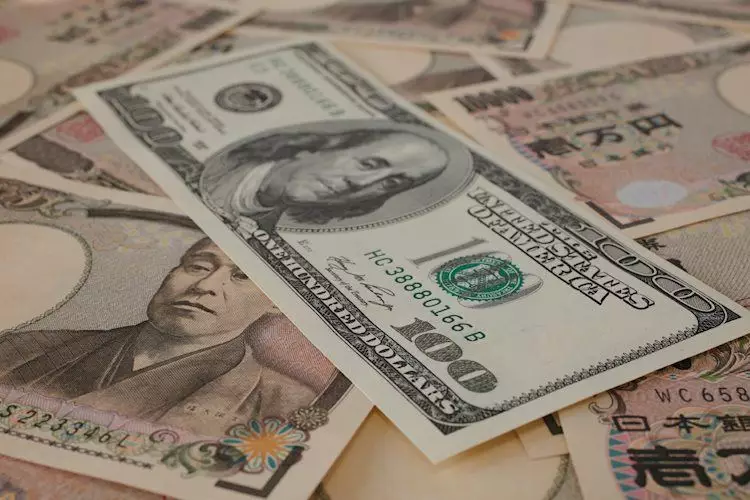As financial markets continue to evolve, the USD/JPY currency pair reveals a dynamic interplay between the US dollar’s strength and Japan’s economic indicators. Recently, the USD/JPY has seen a decline, dipping to around 150.05 despite a robust performance from the US dollar during Friday’s Asian trading session. This paradox underscores the complexities of currency trading, where two major economic forces are constantly at odds, making it increasingly critical for investors to analyze both local and global economic signals.
The anticipated economic reports from the U.S., specifically relating to Building Permits and Housing Starts scheduled for later that day, are also on traders’ radars. They could provide valuable insights into the housing market and influence future currency movements. Additionally, the speeches by prominent Federal Reserve officials, including Raphael Bostic and Neel Kashkari, may offer market participants clues about the Fed’s future monetary policy directions, adding another layer of influence on the USD/JPY pair.
Turning to Japan’s domestic economic indicators, the recent report from the Statistics Bureau unveiled a notable decrease in the Consumer Price Index (CPI) for September. The annual inflation rate dropped from 3.0% in August to 2.5%, suggesting a cooling of price increases. Although a decline in the CPI may provide some relief to consumers, it raises questions about the Bank of Japan’s (BoJ) approach to monetary policy amidst these shifting economic landscapes.
Excluding volatile categories such as fresh food and energy, the CPI grew by 2.1% year-over-year, a marginal deviation from expectations. This slight overachievement compared to the consensus estimate of 2.3% could complicate the BoJ’s decision-making process as it attempts to gauge global economic uncertainties. With inflation in the desired range, BoJ Governor Kazuo Ueda commented that the central bank is prepared to adjust rates in response to persistent inflationary pressures, signaling potential future shifts in monetary policy.
On the U.S. front, the better-than-expected September retail sales data indicated that the economy remains robust, thereby reducing downward pressure on the USD. Despite this positive economic backdrop, the Federal Reserve is expected to tread carefully when it comes to interest rate cuts. The statements from Fed officials suggest a mixed approach, with Bostic indicating potential for one more 25 basis points reduction in rates this year. Meanwhile, Kashkari’s emphasis on a modest approach to future cuts reflects the Fed’s commitment to closely monitoring economic indicators before making significant policy changes.
Furthermore, market projections reveal a 90.3% likelihood of a 25bps rate cut taking place next month. Such anticipations bolster the notion that the Fed is striving for balance, keenly aware of the economic ramifications of its policies on both domestic and international fronts.
The Japanese Yen’s value is influenced significantly by the divergences between the BoJ’s monetary policies and those of other central banks, particularly the Federal Reserve. Over the past decade, the BoJ’s commitment to ultra-loose monetary policy created a stark contrast with its international counterparts, driving the Yen’s depreciation against currencies like the US dollar. This divergence has shaped investor perceptions and influenced capital flows, thereby positioning the Yen as a currency with distinct risks and advantages.
However, recent shifts suggest that the BoJ may be willing to re-evaluate its ultra-loose stance. Analysts speculate that as the BoJ gradually unwinds its monetary support, the gap between Japanese and US bond yields may narrow, consequently supporting the Yen’s strength. Thus, understanding the interplay between Japanese fiscal determinants and global economic health is crucial for forecasting future Yen performance.
The Yen as a Safe-Haven Asset
Interestingly, the Yen also stands out as a safe-haven currency, traditionally favored by investors during turbulent times. As global economic uncertainties rise, the Yen’s appeals as a refuge increase, drawing capital away from riskier assets. This tendency elevates the Yen’s value, counteracting some of the impacts of domestic monetary policies.
Turbulent market conditions can drastically reshape investment paradigms, compelling traders to seek reliability—attributes often associated with the Japanese currency. Therefore, as external challenges mount and risk sentiment fluctuates, the Yen’s behavior becomes increasingly aligned with market psychology, emphasizing the importance of interpreting investor sentiment alongside hard economic data.
The USD/JPY currency pair’s recent movements reflect a complex tapestry woven from domestic economic data, central bank policies, and the global economic landscape. As traders navigate these turbulent waters, they must remain vigilant, continuously assessing the factors that drive currency dynamics in an ever-changing market.

